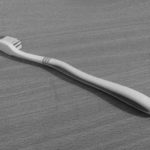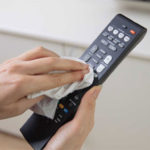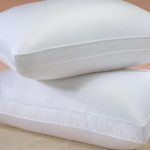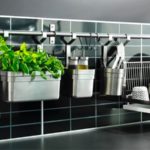Office Desk
Did you know that your office desk can harbor up to 400 times more bacteria than a toilet? If left uncleaned, it can be a breeding ground for harmful germs, especially those that cause respiratory illnesses. So, it’s important to keep your desk tidy by organizing papers and other items, and using a damp cloth to wipe away dust and grime regularly.
Keep your work environment hygienic and give it a quick disinfecting wipe-down to ensure your health and well-being.

Bathroom Walls
Due to constant moisture, bathroom walls provide an ideal environment for mold and bacteria to thrive. In fact, they can be multiple times dirtier than your toilet. To keep them clean, pour some fabric softener on the walls and scrub with a sponge to remove stains and mold. Also, consider installing an exhaust fan to reduce moisture levels.

Cutting Boards
If you regularly prepare raw meat on your cutting board without proper cleaning, you’re exposing your family to 200 times more bacteria than a toilet. After cooking, disinfect your cutting board with dish soap and hot water, and then rub the surface with lemon to neutralize odors and kill bacteria.

Computer Keyboard
Your computer or laptop keyboard can accumulate 200 times more bacteria than a toilet. To maintain a healthy computing environment, regularly clean your keyboard by using compressed air to blow out dust and crumbs, and then wiping it down with disinfecting wipes.
Floor
It’s no surprise that your floor can harbor thousands of times more bacteria than a toilet, considering the amount of foot traffic, pets, and activities that take place there. To keep your floor clean and maintain its shine, sweep or vacuum regularly, and then mop with disinfectant floor cleaners to eliminate bacteria and deep-clean the surface.

Keep all your cleaning supplies in one basket or bucket, stored in a corner of the room, so they’re easily accessible when it’s time to tidy up.
We hope this article has shed some light on the dirtiest places in your home. Remember to pay extra attention to these areas to maintain a clean and healthy living environment for you and your loved ones.
8 Common Mistakes People Make with Cutting Boards
Are you using your cutting board correctly? Many Vietnamese households rely on cutting boards in their kitchen, but not everyone knows how to use them properly, especially when it comes to wooden cutting boards. Check out these 8 mistakes to avoid when using a cutting board to ensure both hygiene and safety for everyone in your family.





































